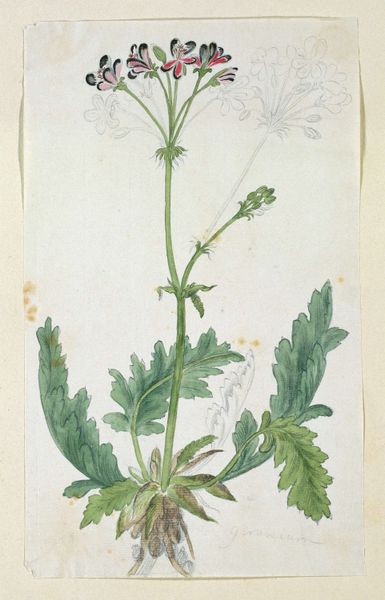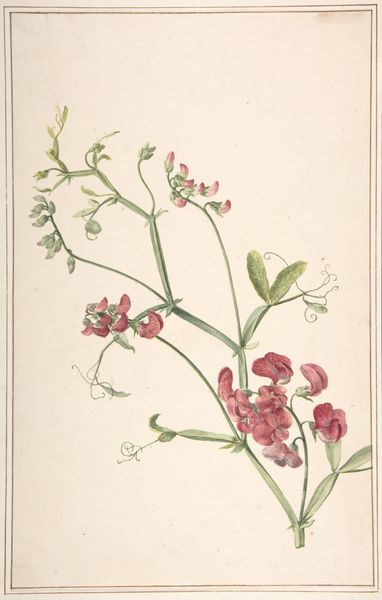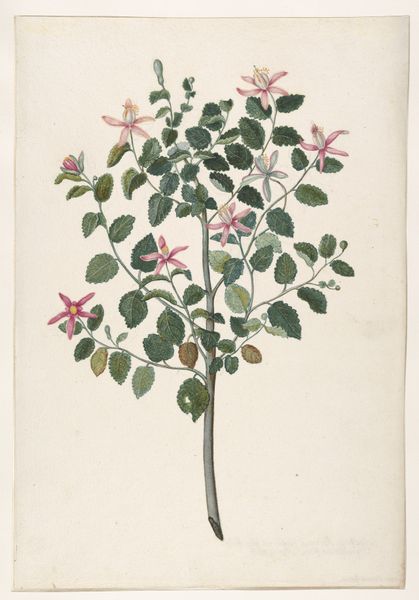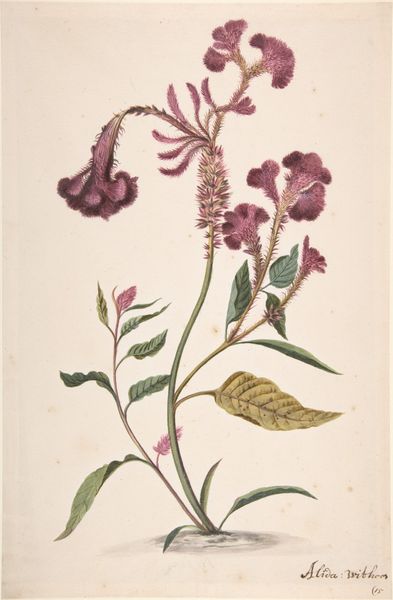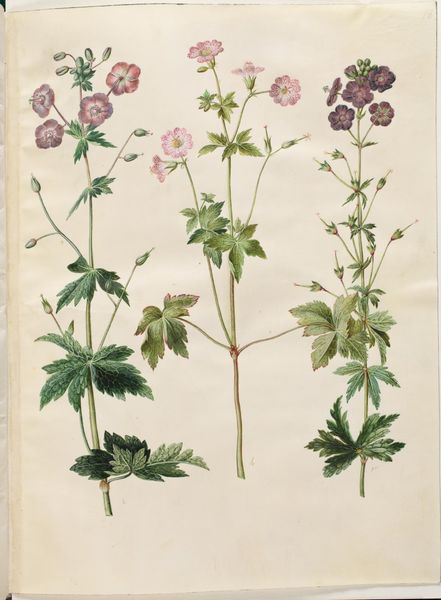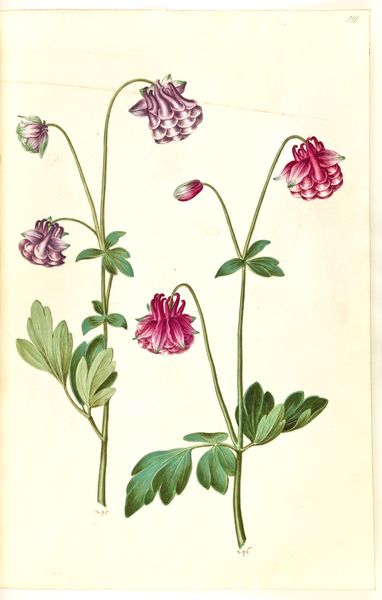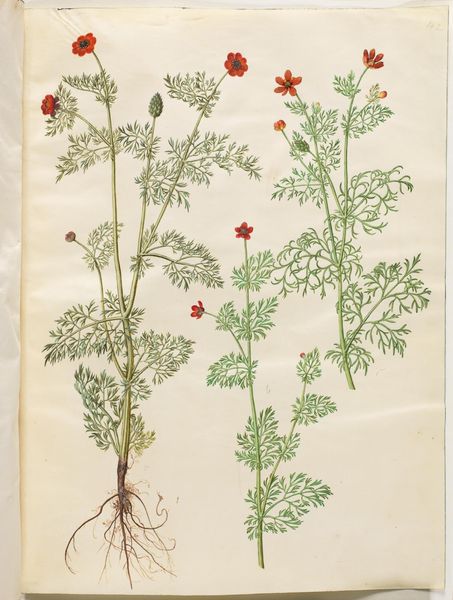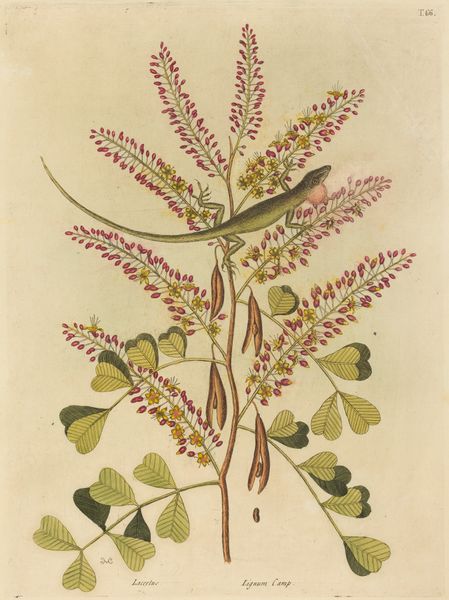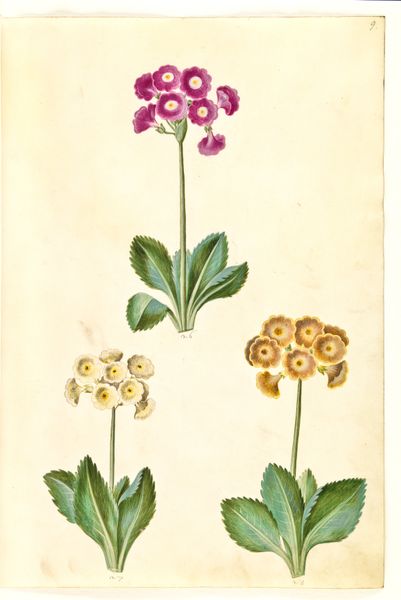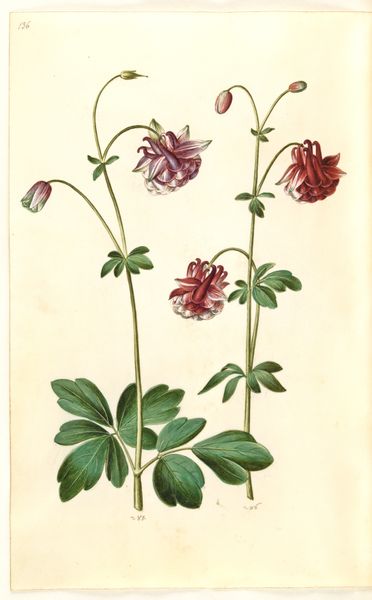
Pelargonium echinatum W. Curtis (Prickly-stemmed pelargonium) Possibly 1777 - 1786
0:00
0:00
drawing, watercolor
#
drawing
#
water colours
#
watercolor
#
botanical drawing
#
watercolour illustration
#
botanical art
#
watercolor
Dimensions: height 660 mm, width 480 mm, height 345 mm, width 192 mm, height mm, width mm
Copyright: Rijks Museum: Open Domain
Robert Jacob Gordon captured this prickly-stemmed pelargonium in a watercolor painting sometime before 1795. At first glance, the plant draws you in with its complex mix of textures and forms that seem at once organic and geometrically ordered. Consider the formal structure: Gordon masterfully employs line and color to achieve both scientific precision and aesthetic appeal. The stem, with its sharp thorns, is rendered in meticulous detail, its texture contrasting with the soft, rounded forms of the leaves and delicate petals. The color palette is restrained, dominated by greens and whites, but punctuated by small splashes of red, creating a visual rhythm that leads the eye through the composition. Gordon's work functions as a kind of symbolic map reflecting the intellectual climate of the late 18th century and the drive to classify and understand the natural world. The structured portrayal invites us to consider how we impose order on nature, and how those structures shape our understanding.
Comments
No comments
Be the first to comment and join the conversation on the ultimate creative platform.
